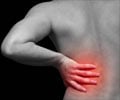Discover the top five causes of back pain in Indian women, including a sedentary lifestyle, pregnancy, and endometriosis, and learn effective management strategies.
- Sedentary lifestyle and poor posture are major causes of back pain
- Pregnancy and hormonal changes can lead to back discomfort
- Obesity and endometriosis are significant risk factors for chronic pain
Top 5 Causes of Back Pain
The five most common causes of back pain in Indian women are:1. Sedentary Lifestyle
A sedentary lifestyle is one of the leading causes of back pain among Indian women. With increasing urbanization, many individuals are spending long hours sitting at desks or engaging in minimal physical activity (1✔ ✔Trusted Source
Sedentary behavior is associated with musculoskeletal pain in adolescents: A cross sectional study
Go to source).
Sedentary lifestyles and obesity significantly contribute to back pain in women. #medindia #backpain’
Impact
Muscle Weakness: Lack of exercise leads to weakened core muscles that support the spine.
Posture Issues: Prolonged sitting can contribute to poor posture, causing additional strain on the back.
Lifestyle Adjustments:
Regular Exercise: Incorporate exercises that strengthen the back and core muscles.
Ergonomic Workspaces: Ensure proper posture while working and take frequent breaks to stretch.
2. Pregnancy and Postpartum Changes
Pregnancy brings significant changes to a woman's body, including alterations in posture and weight distribution, which can lead to back pain. Additionally, postpartum recovery can also be a period of back discomfort (2✔ ✔Trusted Source
Pregnancy-related low back pain
Go to source).
Impact
Weight Gain: Increased weight during pregnancy puts extra stress on the back.
Hormonal Changes: Hormones such as relaxin, which are essential during pregnancy, can cause the ligaments to loosen, affecting spinal stability.
Self-Care Tips
Prenatal Exercises: Engage in safe exercises that strengthen the back and improve posture during pregnancy.
Postpartum Care: Consult a healthcare provider for appropriate exercises and treatments after childbirth.
Menstrual cycles and hormonal fluctuations can also be linked to back pain in women. Conditions like dysmenorrhea and endometriosis are known to cause significant discomfort (3✔ ✔Trusted Source
Dysmenorrhea
Go to source).
Impact
Dysmenorrhea: Painful menstrual cramps can radiate to the back.
Endometriosis: This condition involves the growth of uterine tissue outside the uterus, which can cause chronic back pain (4✔ ✔Trusted Source
Endometriosis
Go to source).
Management Options
Pain Management: Use heat therapy and over-the-counter pain relievers to manage menstrual pain.
Medical Consultation: Seek professional advice for persistent pain and consider treatments for underlying conditions like endometriosis.
4. Obesity and Weight Gain
Obesity is a significant risk factor for back pain. Excess body weight puts additional stress on the spine and its supporting structures (5✔ ✔Trusted Source
Body Mass Index and Its Influence on Chronic Low Back Pain in the Spanish Population:A Secondary Analysis from the European Health Survey (2020)
Go to source).
Impact
Increased Load: Extra weight strains the spinal column and its supporting muscles.
Inflammation: Obesity can lead to inflammation, which may exacerbate back pain.
Lifestyle Adjustments:
Healthy Diet: Maintain a balanced diet to manage weight and reduce stress on the back.
Physical Activity: Engage in regular physical activity to support weight management and overall health.
5. Pelvic Inflammatory Disease (PID)
PID is an infection of the reproductive organs, often resulting from sexually transmitted infections. It can cause significant lower back pain along with other symptoms.
Symptoms:
- Lower abdominal and back pain
- Fever
- Unusual vaginal discharge
- Irregular menstrual bleeding
- Antibiotics: To treat the underlying infection.
- Pain Relief: NSAIDs can help manage pain.
- Prevention: Practicing safe sex and regular gynecological screenings can help prevent PID (6✔ ✔Trusted Source
Pelvic Inflammatory Disease
Go to source).
References:
- Sedentary behavior is associated with musculoskeletal pain in adolescents: A cross sectional study - (https://pubmed.ncbi.nlm.nih.gov/36257097/)
- Pregnancy-related low back pain - (https://www.ncbi.nlm.nih.gov/pmc/articles/PMC3306025/)
- Dysmenorrhea - (https://www.ncbi.nlm.nih.gov/books/NBK560834/)
- Endometriosis - (https://www.ncbi.nlm.nih.gov/books/NBK567777/)
- Body Mass Index and Its Influence on Chronic Low Back Pain in the Spanish Population:A Secondary Analysis from the European Health Survey (2020) - (https://www.ncbi.nlm.nih.gov/pmc/articles/PMC10452522/)
- Pelvic Inflammatory Disease - (https://www.aafp.org/pubs/afp/issues/2012/0415/p797.html)
















